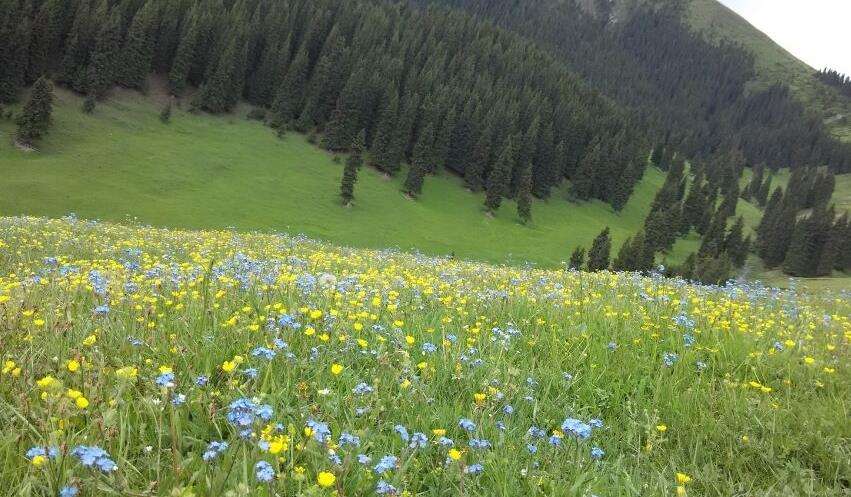The Beautiful Mouth of he Grassland
3 min readI was always attracted by the beautiful mountains and rivers when I got off on the picturesque Akqi Prairie. Ibrahim, the hospitable head of the song-and-dance troupe of Kizilsu Kirgiz Autonomous Prefecture came to greet me, with a broad smile on his face. We were exceptionally glad to see him, a locally well-known kumuz player. He’s in his 50s, not tall but very hospitable. He laughed loudly when he saw me, “Welcome, my old friend.”He called me old friend because I had been there before for many times to collect epic Manas sung by Jusup Mamay, the “Homer” of modern time.

He smiled and told me, “I have made an appointment with the bearer of kumuz who you want to interview. Let’s go. We were heading to the home of the locally famous Resier Kaideqin in No. 3 Village of Sepayi Township of Akqi County. He was a capable man who could make many kinds of handicrafts, for instance, saddles, harness, knives and hats.But what he was proud of was his skill in making kumuz. Contrary to Ibrahim, Resier Kaideqin was shy and inarticulate. Knowing what I went there for, he immediately started to make kumuz. Ibrahim acted as the interpreter due to the obstacle of language. He pointed to the kumuz hanging in the workshop and said, “Kumuz has a long history. Its voice is beautiful.
It is said that it was originally called kuwuz, which means beautiful musical instrument. It was made of Korean pine, and had the similar shape as today’s kumuz. The head was elliptical and the end was thin and long. It could be used to play folk music or play marching music with duowulebasi battle drum to boost the morale of the soldiers.”He laughed when he saw I suddenly saw the light.

The beautiful Kizilsu Kirgiz Autonomous Prefecture Resier Kaideqin began to make kumuz. He said as demonstrating, “To make a kumuz, you need to select good materials. We used to use Korean pine, but now we use fruit tree.

Korean pine is too rare and too expensive And it’s not easy to get. Mulberry wood or apricot wood are also ok. Now the first step is to saw the mould of kumuz.” This reminded me of the principle of making a wood mould when making adobe when I was a kid. Ibrahim was the locally best kumuz player, so he was best qualified to talk about the history of kumuz. While watching Resier Kaideqin making the mould, he told me about the long history of kumuz. Both kumuz and the Mongolian huobusi are plucked musical instruments created by the nomadic ethnic groups in the northwest China in the ancient times. Kumuz and huobusi are homophones. There are a variety of Kumuz which falls into seven or eight shapes. The most ancient one is the wood Mongolian leather three-stringed kumuz. The improved ones include the wood threestringed- plucked yakeqi kumuz,wood- -iron three-stringed plucked Pamir kumuz, and four-stringed kumuz of various materials. The Japanese Kenzo Hayashi said in his Study of Musical Instruments in East Asia that the word kuto in Japanese, which means stringed instrument, was originated from the kumuz spread to Japan in the Tang Dynasty. Kumuz became the first ancestor of Japanese stringed instruments and can still be found in today’s Japan. Authorized Drawings of Statutes of the Qing Dynasty describes that kumuz was among the tributes paid by the Khaklhas to the Qing Court, after Emperor Qianlong put down the rebel in southern Mt. Tianshan in Xinjiang. Four-stringed Mongolian leather kumuz of the Khaklhas was used in the Shibang performed by a Mongolian band, one of the The Banquet and Four Events Held in Chengde Imperial Summer Resort drawn during the reign of Emperor Qianlong of the Qing Dynasty, which is now a collection of the Palace Museum. With the west expedition of Genghis Khan, kumuz was brought to Yunnan and other places in southwest China. The predecessor of segudu that is still popular in the Naxi ethnic group in Yunnan is also the kumuz of the Khaklhas








